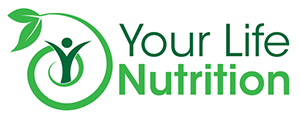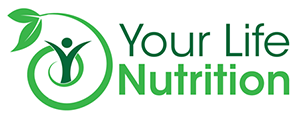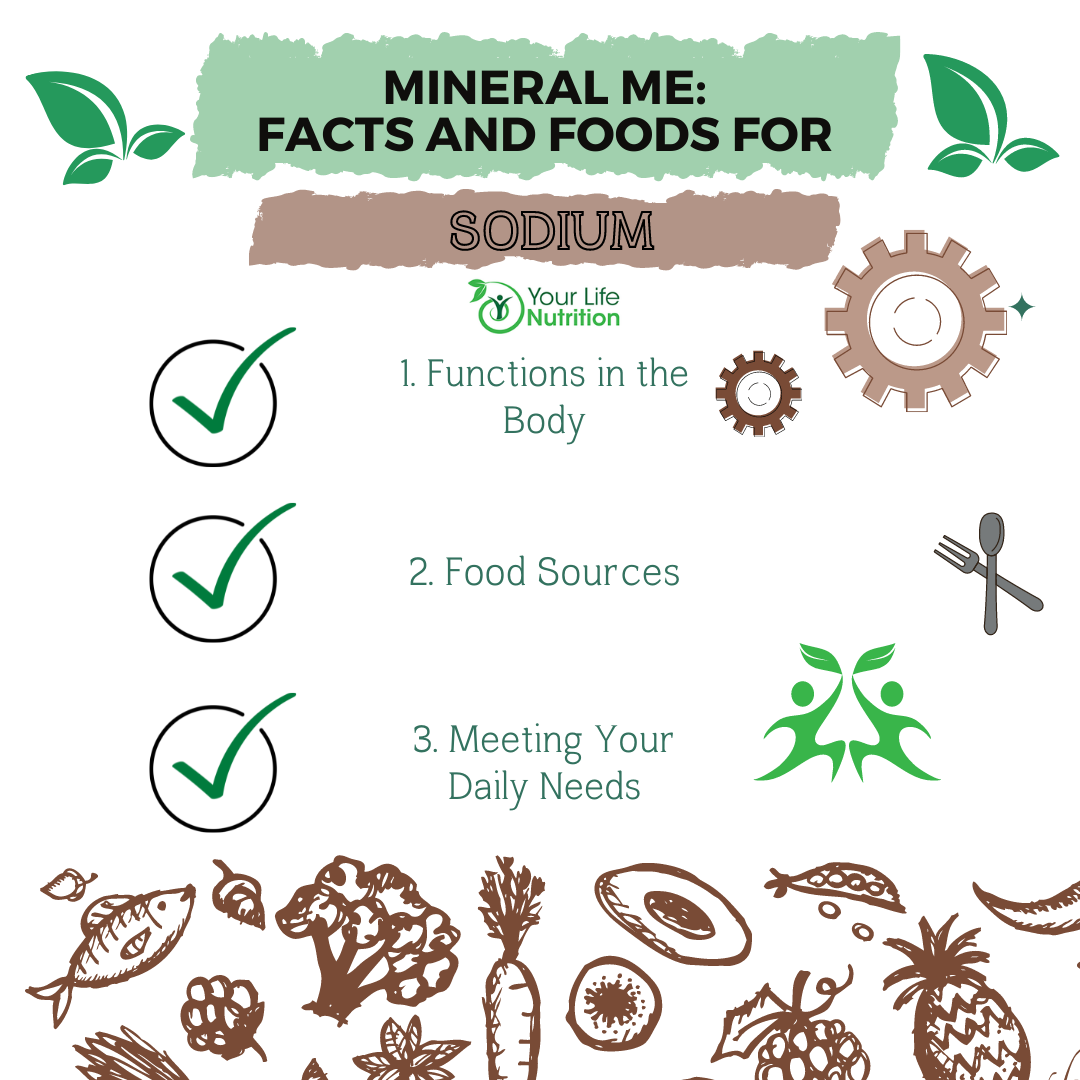We often hear of people trying to watch their sodium intake or of doctors putting individuals on a low sodium diet. But why is that? What is sodium and why is it so “bad”? Well, sodium is not bad per say, it is actually a very important mineral involved in the fluid balance within the body.1 But, since it has such an important job in the body, it also has a tight budget on a healthy amount that should be present in the body so it can do this job efficiently. We are going to talk all about sodium, what it does, what foods contain it, and what happens if we have too much or too little sodium.

So, what is sodium? Well, sodium is a major mineral, the most abundant one present in the body to be exact.1 We need a substantial amount to keep our bodies healthy, the problem is a little goes a long way. Just a pinch of table salt, a very popular form we are familiar with which consists of sodium and chloride, contains 400 mg of sodium.1

Sodium’s main job is maintaining fluid balance.1 This is an important part of maintaining good blood pressure which is why doctors often have people with high blood pressure reduce the amount of sodium they eat.1 Water makes up 60% of our body and is present in nearly every cell, so it is pretty important that it is regulated so we have water where we need it to be at all times!.1 How does it do this? Well, sodium is an electrolyte, meaning it carries an electrical charge.1 Why is this important? Well, this charge helps it to communicate with other electrolytes and send important messages throughout the body.1 Sodium also creates channels that allows for other nutrients and compounds to move into and out of the cells (for example, amino acids, glucose, and vitamins), it helps our muscles and heart to contract, and maintains important communication between the brain and body.1
Sodium also interacts with some other nutrients in the body like potassium and chloride which also play a role in fluid balance.1 What is important is that we keep our sodium intake within recommended limits and make sure we are getting adequate potassium and chloride in order to have a healthy blood pressure.1 Too much sodium can also affect our calcium and bone health, because excessive levels of sodium need to be removed.1 The way the body does this is by pulling the calcium from our bones so it can attach to the sodium and escort it out through the urine.1
Since this nutrient is involved in some very precise regulatory roles, it’s important we have the right amount in our diet and body so it can continue to do this effectively. How much does this look like? For adults over the age of 18, 2 grams or 2,000-2300 mg per day is recommended, which is equivalent to 5 grams of table salt or 1 tsp.1 Yes, that’s right, one teaspoon! If we get too much sodium, we put our bodies at higher risk for higher blood pressure and cardiovascular disease.1 However, too little sodium is also very dangerous as it can cause metabolic disorders, kidney malfunction, and severe diarrhea.1
Now, believe it or not, table salt is not the only source of sodium in the American diet! Sodium gets added to a lot of foods because it helps keep it shelf stable a lot longer.1
Here are some foods that have added sodium to them:
- Food sauces like soy sauce = 879 mg per Tbsp.
- Processed meats like ham, bacon, sausage, & deli meat = 774 mg per 3.5 oz.
- BBQ sauce = 395 per 2 Tbs.
- Canned foods (yes even our veggies and fruits) = about 350-400 mg per ½ cup
- Cheddar Cheese = 174 mg per 1 oz.
- Ketchup = 154 mg per Tbsp.
- Bread = 147 mg per 1 slice

Sodium is also present naturally in foods.2 Here is a list of naturally occurring sodium sources:
- Sunflower seeds = 1706 mg per oz.
- Clam = 1022 mg per 3 oz.
- Milk = 107 per cup
- Celery = 88 mg per cup
- Beets = 64 mg per beet

Now, while these foods do contain sodium, about 70% of the sodium in our diet comes from the processed or added salt to foods.2 The best practice is to limit these processed foods and try to stay away from the salt shaker and instead, eat these natural sources of sodium to reach the daily recommended intake.1 Being aware of how much sodium gets added to food can help you make sure you aren’t consuming too much. The best way to do this is to read the food label to see how many milligrams of sodium a serving contains. You can also look at the ingredient label for anything with the word “sodium” or “salt” in it.2 The higher up on the ingredients list, the more of that ingredient there is in the food. There are many options for canned or processed foods that have a lower or no salt added alternative which can help keep your intake down.2 If you are not able to find low-sodium or no salt added options, you can always rinse your canned foods to remove around 23-30% of the sodium.3 Sodium is such an important mineral in our bodies, but too much or too little can cause serious health concerns, so it is always best to keep an eye on the amounts of added sodium we are eating per day and try to find foods with naturally occurring sodium instead.
References
- Sodium: Foods, functions, how much do you need & more. Eufic. https://www.eufic.org/en/vitamins-and-minerals/article/sodium-foods-functions-how-much-do-you-need-more. Accessed February 3, 2022.
- Sodium sources: Where does all that sodium come from? www.heart.org. https://www.heart.org/en/healthy-living/healthy-eating/eat-smart/sodium/sodium-sources#:~:text=Celery%2C%20beets%20and%20milk%20are,of%20sodium%2C%20like%20baking%20soda. Accessed February 3, 2022.
- Effect of draining and rinsing on … – ars home : USDA ars. https://www.ars.usda.gov/ARSUserFiles/80400525/Articles/EB11_DrainedVeg.pdf. Accessed February 8, 2022.
Post created by University of Akron dietetic intern: Michaela Campbells





